
 Flash News
Flash News

Israeli forces intensified the bombing of the Gaza Strip today. This marks the second day of fighting since the end of a week-long ceasefire between Israel and the Hamas militant group.
The warring parties blame each other for breaking the ceasefire. Since fighting resumed two days ago, the Israeli military says it has struck more than 400 militant group targets.
Israeli government spokesman Ofir Gendelman said that the leader of Hamas in Gaza, Yahya Sinwar, is mainly to blame for the breakdown of negotiations on the continuation of the ceasefire in the nearly two-month Israel-Hamas war.
Mr. Gendelman accused Hamas on Saturday of refusing to release more hostages, which he said led to the resumption of fighting in Gaza.
"This decision has a name and it is the leader of Hamas in Gaza, Yahya Sinwar. It is he who prefers to continue torturing our hostages and keep them in inhumane conditions contrary to any international norm or religious morality. He doesn't care at all about the consequences of this decision for the residents of Gaza, who want to continue the ceasefire and return to their normal lives," says Israeli government spokesman Ofir Gendelman.
Washington also blamed Hamas for the ceasefire breakdown.
"The cause of the end of the pause in the fighting is Hamas because the militant group did not provide a new list of names of hostages to be released," said John Kirby, spokesman for the National Security Council at the White House.
Explosions in the eastern part of the city of Khan Younis in Gaza began in the early hours of Saturday as Israeli airstrikes targeted the city in the southern part of the Palestinian territory.
Israel says its ground, air and naval forces hit more than 400 "terrorist targets" in Gaza.
US Secretary of State Antony Blinken said on Friday in Dubai that Israel has begun taking steps to reduce the number of civilian casualties in its confrontation with Hamas by "giving information to the Palestinians about where the safe areas are" to avoid places where they want to go. to carry out bombings.
"The Israeli army called our neighbors and asked us to leave because our houses were going to be hit. We told them we have nothing here, why are you going to hit us? They said. 'It is better for you to leave,' says Hekmat Al Qedra, a resident of a house in Khan Younis in Gaza that was destroyed by Israeli strikes.
Hamas media said that around 200 Palestinians had been killed since the end of the ceasefire, raising the number of Palestinian casualties that, according to unconfirmed figures from the Palestinian militant group's authorities, have exceeded the figure of 15,000 killed since the start of the war.
Meanwhile, in the Yemeni capital, Sana'a, members of the Shia Houthi Movement paraded through the streets of the city on Saturday as they announced that they will leave for the Gaza Strip to fight against Israel.
Footage showed young recruits marching through the streets, armed with rifles and carrying Palestinian flags.
"On this great day, the Yemeni people affirm their readiness to defend the noble Al-Aqsa Mosque in Jerusalem and join the Mujahideen in Palestine," says Muhammad Ali Al-Houthi, a member of the Supreme Political Council of the Houthi movement in Yemen.
The war in the Middle East broke out on October 7 with the terrorist attack by Hamas in the south of Israel, where 1,200 people, mostly civilians, were killed, and 240 others were taken hostage./ VOA
Latest news


Not only the body, swimming also helps the brain
2025-07-05 21:02:49
"Be careful with the water", Alimehmeti warns about the health risks of summer
2025-07-05 20:39:10
PSG beats Bayern Munich 2-0, advances to Club World Cup semifinals
2025-07-05 20:19:38

Two vehicles collide on the Elbasan-Peqin axis, drivers injured
2025-07-05 19:26:29

What does Zelenskyy have more than Zegjineja?
2025-07-05 18:45:26

Fiscal peace, but at a cost
2025-07-05 18:00:10
'Bankers' tax evasion, Chinese CEO and former director jailed
2025-07-05 17:39:21
Kyle Walker joins English club on two-year deal
2025-07-05 17:20:24
Two cars collide on the Saranda-Delvina axis, 4 injured
2025-07-05 17:05:29
Touching gesture! Liverpool will pay Jota's family's salary until 2027
2025-07-05 16:45:18
The zodiac signs that cheat most often
2025-07-05 16:25:53

"I asked for the dismissals", Dredha tries to soften Rama's 'blow' in Vlora
2025-07-05 15:48:49
Bomb threat in Parliament, prosecutor: It was a lie
2025-07-05 15:22:28

Bardhi: The recount revealed how greedy Zeqine Balluku is in stealing
2025-07-05 14:44:29
Knife wound on the secondary road Tirana-Durrës, perpetrator sought
2025-07-05 14:37:54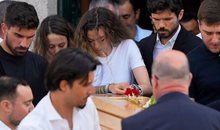
Tears and pain, Diogo Jota is escorted to his final home
2025-07-05 14:21:34
Success starts with yourself! Simple ways to invest in personal development
2025-07-05 13:58:50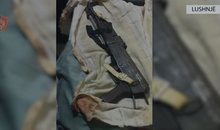
Unlicensed firearms found in apartment, 50-year-old arrested in Lushnje
2025-07-05 13:43:11

Tirana Court remands Skerdi Sina to prison
2025-07-05 12:59:34
Cocaine laboratory in Greece, here are the Albanians arrested and wanted
2025-07-05 12:40:16
Directed Justice/Vangjeli: SPAK does not investigate any scandal involving Rama
2025-07-05 12:22:03

Bomb alert, Police remove MPs and media from Kosovo Parliament building
2025-07-05 11:48:16
"The will of the people" and the irony of ordered resignations
2025-07-05 11:32:05
Summer drowning risk: How to enjoy the water without risking your life
2025-07-05 11:20:27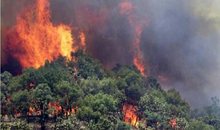
Fire situation in the country, 16 fires reported in 24 hours, 4 still active
2025-07-05 11:07:04
Car hits pedestrian at white lines, injured in serious condition in Vlora
2025-07-05 10:59:58
Mosquito-borne diseases are a growing problem in Europe
2025-07-05 10:44:13



One of Sweden's most dangerous and wanted criminals arrested in Turkey
2025-07-05 09:38:29
Foreign exchange/ How much foreign currencies are bought and sold today
2025-07-05 09:18:38

"Don't be influenced by the opinions of others", today's horoscope
2025-07-05 08:40:50

Morning Post/ In 2 lines: What mattered yesterday in Albania
2025-07-05 08:02:07
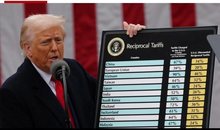
Trump says he's ready to raise tariffs to 70% on some countries
2025-07-04 22:35:52
Tre shenjat e zodiakut që do ‘pasurohen’ në Korrik
2025-07-04 22:05:09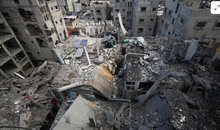
Gaza War: Hamas Accepts US Proposal for 60-Day Ceasefire
2025-07-04 21:50:10
Autocracy in Albania, Fuga: Governance has gotten out of control
2025-07-04 21:40:51
Meta: Agriculture on credit, the new fraud!
2025-07-04 21:26:39
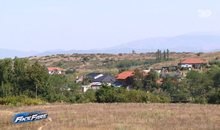



Vote recount in Durrës ends without changes
2025-07-04 20:12:54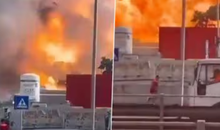
Gas station explodes in Rome, 25 injured (VIDEO)
2025-07-04 20:00:20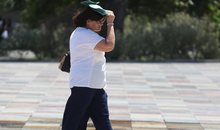

These afternoon habits often sabotage weight loss
2025-07-04 19:39:28
Former Arsenal player Thomas Partey accused of rape
2025-07-04 19:24:21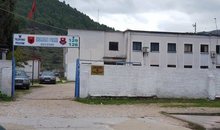
Shepherd disappears without a trace in Delvina
2025-07-04 19:14:31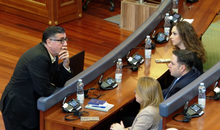

Bardho gave Zegjine's mandate/Braho: Unfair! It violates the electoral system
2025-07-04 19:01:08
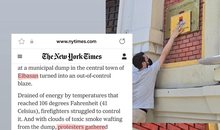

Rapid developments in the Sultanates!
2025-07-04 18:00:06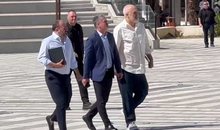



Italy tightens rules for skateboard traffic
2025-07-04 17:20:18

Unusual for the time, dense fog covers the coast of Vlora
2025-07-04 16:48:01

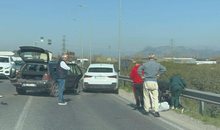
Accident on the Shkodra-Lezhë axis, one dead and 3 injured
2025-07-04 16:14:19
Albania with fewer requests for asylum and Albanian citizenship in 2024
2025-07-04 16:06:57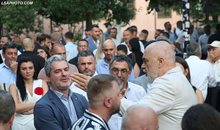

Albania last for quality of life, DP: Technical government is the solution!
2025-07-04 15:42:30
Nico Williams says "No" to Barcelona, signs with Athletic Club until 2035
2025-07-04 15:33:35
Fires in the country, four fires are still active, what is the situation?
2025-07-04 15:24:20

Summer brings big changes for these 4 zodiac signs
2025-07-04 15:00:04
Osmani: MPs need to agree to a secret ballot for the Speaker of Parliament
2025-07-04 14:51:09
Serious accident on the Peqin-Elbasan axis, two injured
2025-07-04 14:37:56
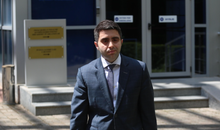
GJKKO leaves in force the security measure for the head of the KPP
2025-07-04 13:58:17
Who will replace Ilir Meta and take over the leadership of the PL?
2025-07-04 13:50:36
Berisha: Dismissal of directors in Vlora, another act of 'scapegoats'
2025-07-04 13:41:46




Librazhd/ In a serious psychological state, the young man consumes pesticides
2025-07-04 13:05:07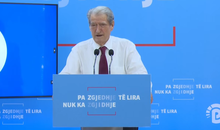


Weapons trafficked from Kosovo to Albania, two arrested, 8 pistols seized
2025-07-04 12:33:28
Konsumimi i tepërt i çokollatës, ja cilat janë dëmet që shkakton në organizëm
2025-07-04 12:23:35
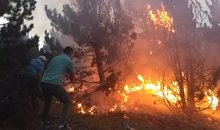
Fires in the country, 21 fires in the last 24 hours, 4 still active
2025-07-04 12:00:19
WB calls for debt transparency: Albania to publish details of every loan
2025-07-04 11:50:05
